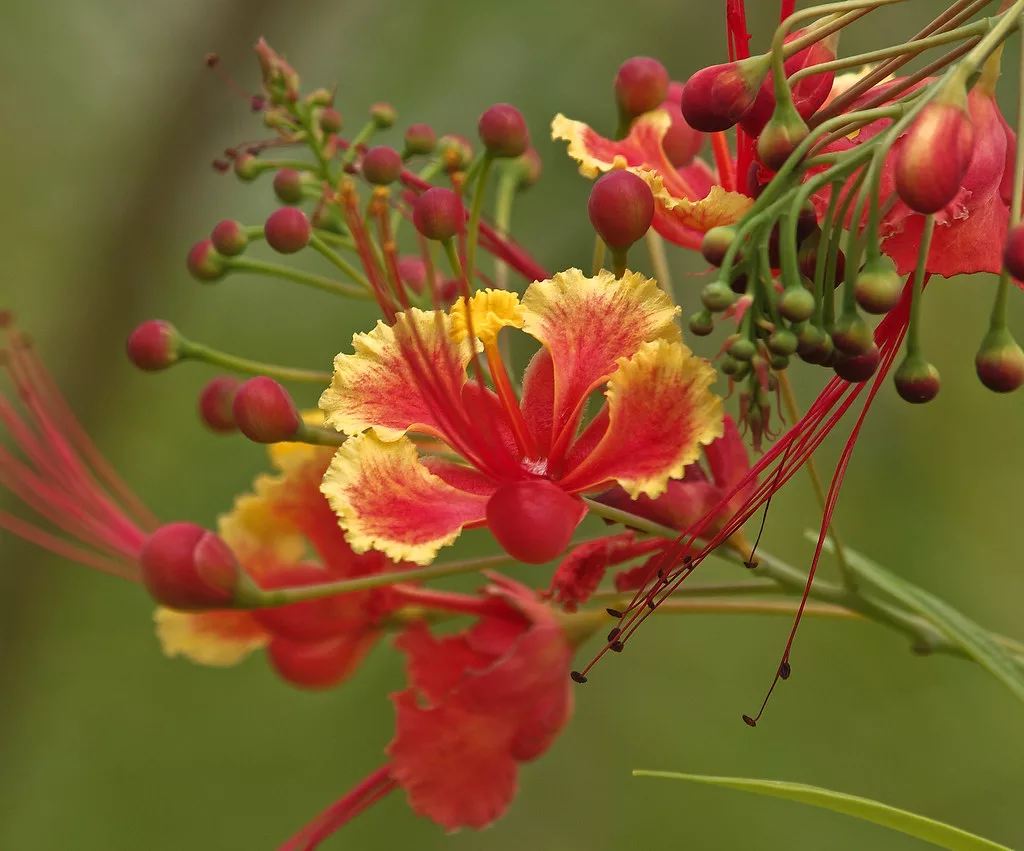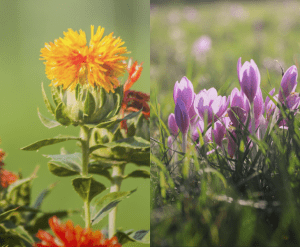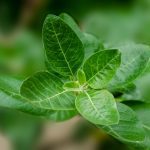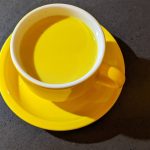Have you ever wished for a single plant that combined the grandeur of a tree with the beauty of a flower garden? The peacock flower, also known as the crimson bird of paradise, is the one you’re looking for, so stop looking. In addition, the peacock flower is drought-resistant and attracts a lot of beneficial insects, which is something the pollinators will appreciate.
Native to the tropics and subtropics of the Americas, the flowering plant Caesalpinia pulcherrima belongs to the Fabaceae family of peas. It is possible that it originated in the West Indies, but due to its widespread cultivation, its true origin cannot be determined. Some of the names by which this plant is known include: poinciana, flamboyant-de-jardin, red bird of paradise, Mexican bird of paradise, dwarf poinciana, pride of Barbados, flos pavonis, and peacock flower. Peacock Flower is typically thought of as an ornamental shrub and is commonly grown in gardens and parks for its stunning red or yellow flowers.

Peacock Flower’s Medicinal Use:
- Contributes to the management of cholera patients
- It is important to stop diseases like malaria from spreading.
- Increases the amount of blood that is discharged during menstruation.
- Laxatives are substances that help stimulate bowel movements by moving stool through the digestive tract.
- So that the body can produce its own source of energy.
- In order to alleviate the pain in the chest.
- Bringing down the temperature of someone who is sick with a fever.
- It is often utilized in the treatment of bronchitis, asthma, and fevers associated with malaria.
Instructions on How to Make Use of the Peacock Flower:
- Cholera can be treated by administering a decoction that was produced from the roots of the plant.
- Infusions made from the leaves have been shown to improve menstrual flow and even encourage menstruation, as well as provide energy, rid the body of ailments such as malaria, and purify the blood.
- An infusion made from the flowers is effective in helping treat a wide range of respiratory diseases, including asthma, bronchitis, and even malaria fevers. The infusion is made by steeping the flowers in hot water.
The inflorescence of the peacock flower, which can be any shade from yellow to scarlet to orange, is a stunning visual treat. It is a common plant that is planted in gardens all over the world, both public and private, in areas where the winters are warm and moderate. Because of its compact nature and resistance to being pruned, it is ideal for use in the creation of hedgerows and for luring hummingbirds into the area.
The branches are covered in thorns all the way to the tips. The complex leaf is made up of at least twenty-four leaflets that do not have stalks. The flowers that make up the inflorescence, also known as a cluster of blooms on a single stem, are organized in the shape of a pyramid. The flowers that are located at the bottom of the inflorescence have the longest stalks, while the flowers that are located at the top have the shortest stalks. Each of the pods that are flattened out contains anything from six to eight seeds, on average.
Disclaimer: This is for informational purposes only
Did you find this helpful? Let us know in the comments.
You can also visit our Facebook and YouTube pages to know more about plants and their health benefits.
You might also like:








